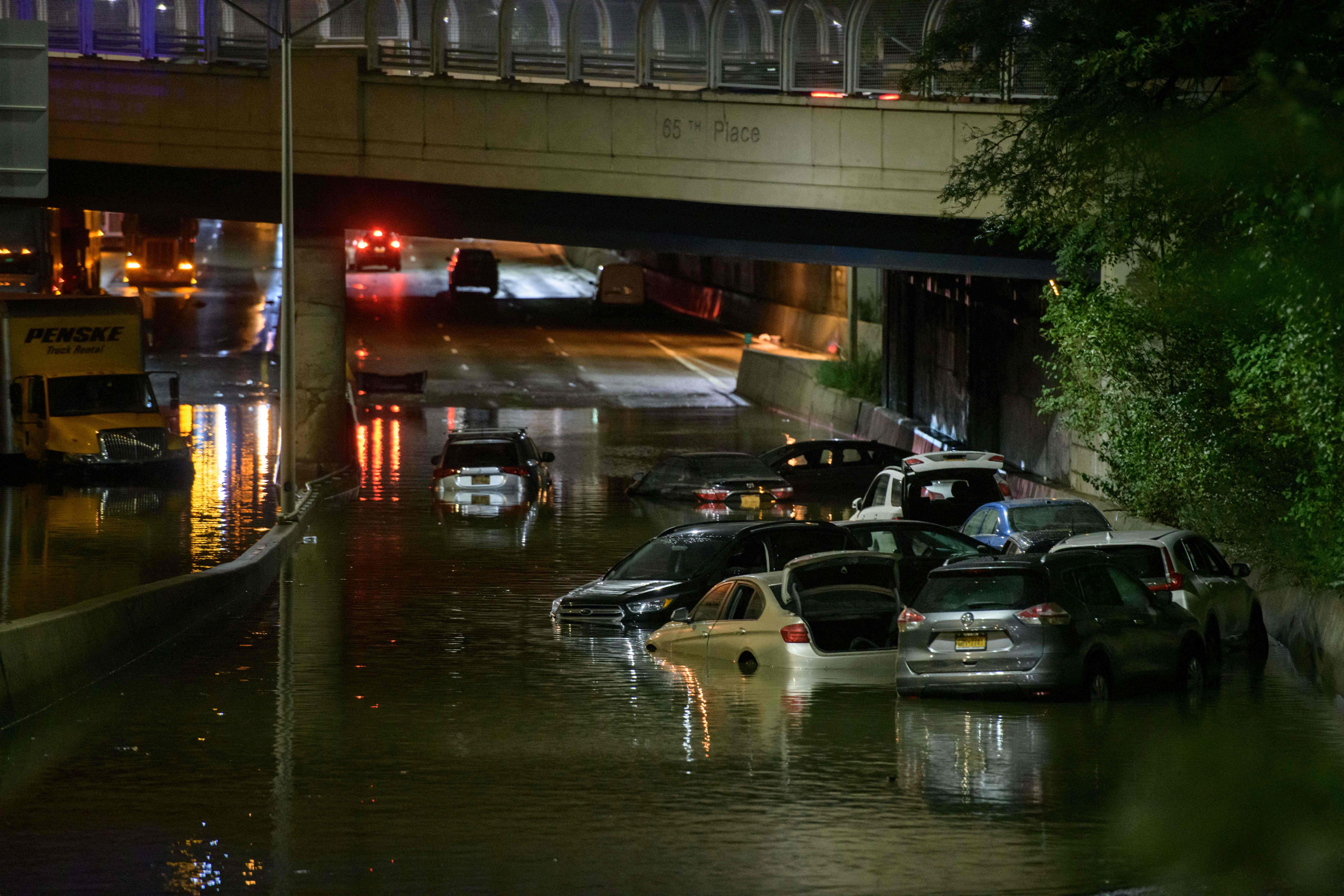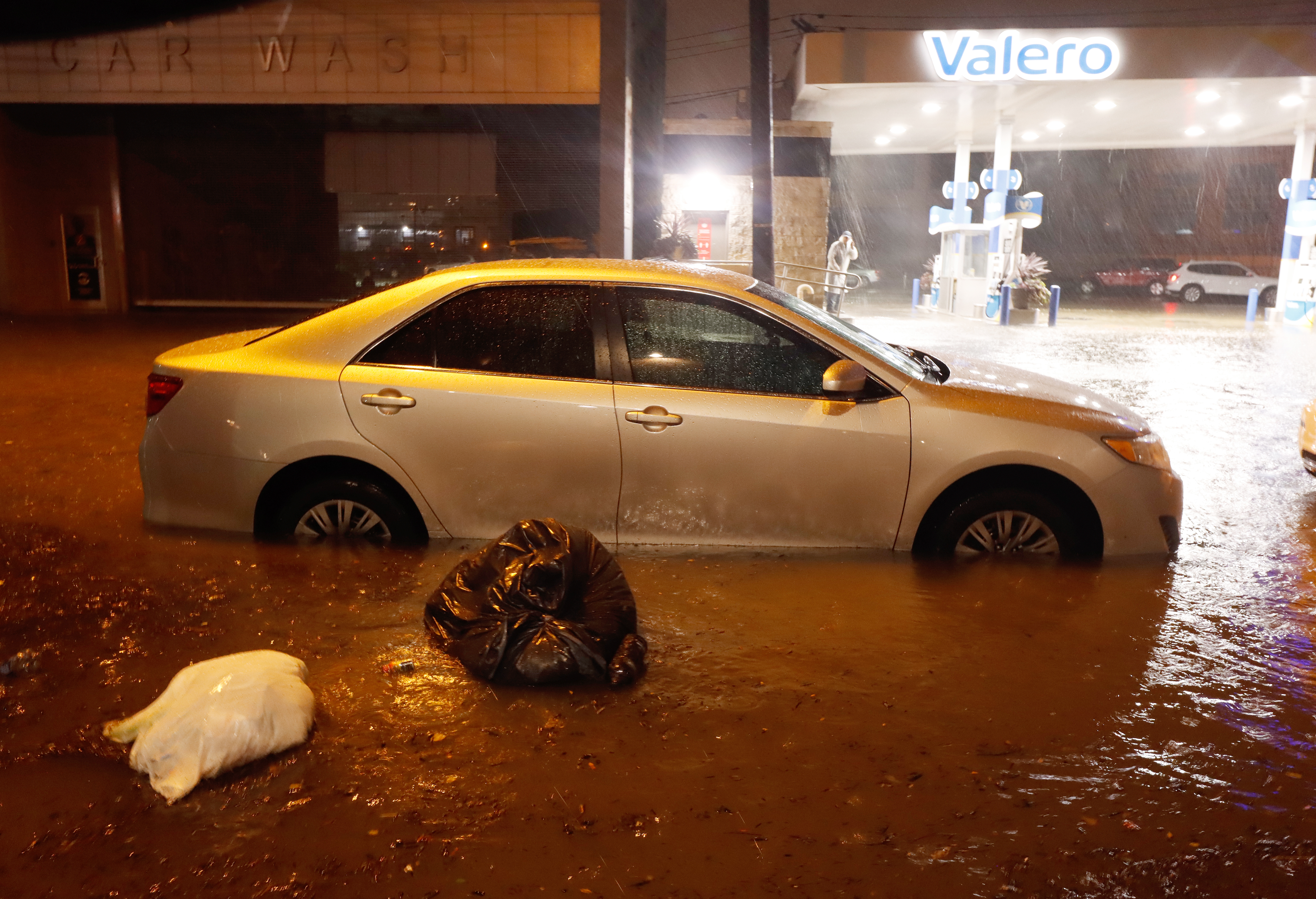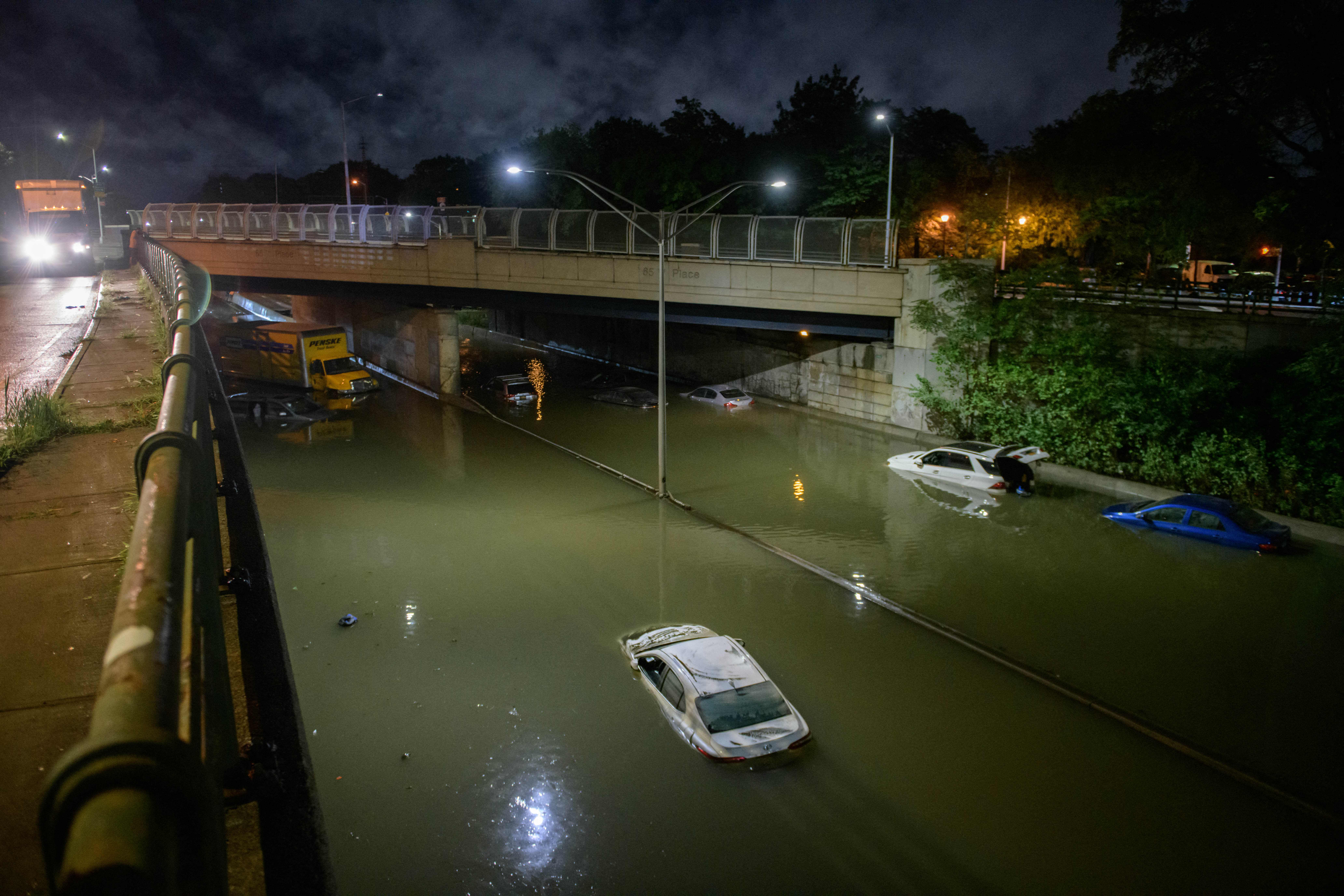Natural and some man-made ingredients came together, causing the weakened but still soggy remnants of Hurricane Ida to devastate the Northeast more than 1,000 miles away from its landfall and days after it left New Orleans in the dark.
This sort of distant and deadly flooding from hurricanes has happened before, and meteorologists had warned that Ida could cause it.
Although Ida had lost most of its 150 mph wind force, the storm kept its strong rainy core. Then it merged with a wet and strengthening non-tropical storm front, according to meteorologists and atmospheric scientists.
When this happens, “very exceptional rainfall can occur,” said MIT meteorology professor Kerry Emanuel.
Get Tri-state area news and weather forecasts to your inbox. Sign up for NBC New York newsletters.
“This is not rare," Emanuel added. “For example, it happened with Hurricane Camille of 1969, which took a similar path.” Camille killed more than 100 people in Virginia from flooding after making landfall as a Category 5 hurricane in Mississippi.
Hurricane Ivan in 2004 took a similar track and triggered record rainfall in Pittsburgh, said meteorologist Bob Henson of Yale Climate Connections. In Ida’s case, he said, conditions were ripe “for rainmaking and it all came to fruition along the I-95 corridor.”
The storm dumped more than3 inches of rain on New York's Central Park in just an hour Wednesday night, obliterating a record set less than two weeks earlier by Tropical Storm Henri. Parts of New Jersey, Massachusetts, Rhode Island and Pennsylvania got more than 9inches of rain.
The death toll and damage amounts are mounting.
Ida Devastates Tri-State
“Some of this is just bad luck too. If Ida had tracked just 100 miles farther east, that heaviest swath of rainfall would have been over the ocean and no one would care,” said University of Miami hurricane researcher Brian McNoldy.
“The severe weather threat and the flash flooding threat in these areas were very well-forecast days in advance, but that doesn’t reduce the destruction they cause,” McNoldy said in an email, attaching National Weather Service warnings from Monday and Tuesday.
Ken Kunkel, a National Oceanic and Atmospheric Administration meteorologist who specializes in extreme rainfall and heat, said his study a few years ago found that one-third of the extreme rainfall events in the Northeast came from remnants of hurricanes and tropical storms.
Human-caused global warming from burning of fossil fuels also likely made Ida's far-reaching impacts a bit worse, experts said.
More on Ida
Warmer air holds more moisture that it can dump, said former hurricane hunter meteorologist Jeff Masters, also of Yale Climate Connections. Air above the oceans has about 10% more moisture than in 1970 and that comes down in storms, he said.
That extra moisture condenses inside storms and releases extra heat energy, which leads to updrafts and makes storms more intense and longer-lasting,“ This can lead to a 30% increase in rainfall, as has been documented in several cases of major flooding,” he said.
Heavier rain falls onto urban areas where pavement such as roads and parking lots worsens water runoff leading to flooding, said University of Georgia meteorology professor Marshall Shepherd. “That human impact is a part of flooding disasters often overlooked.”
Despite planning and efforts since 2012's Superstorm Sandy to be more resilient to extreme weather, more remains to be done, Columbia University climate scientist Adam Sobel said. “Obviously our infrastructure is not up to events like this.”




